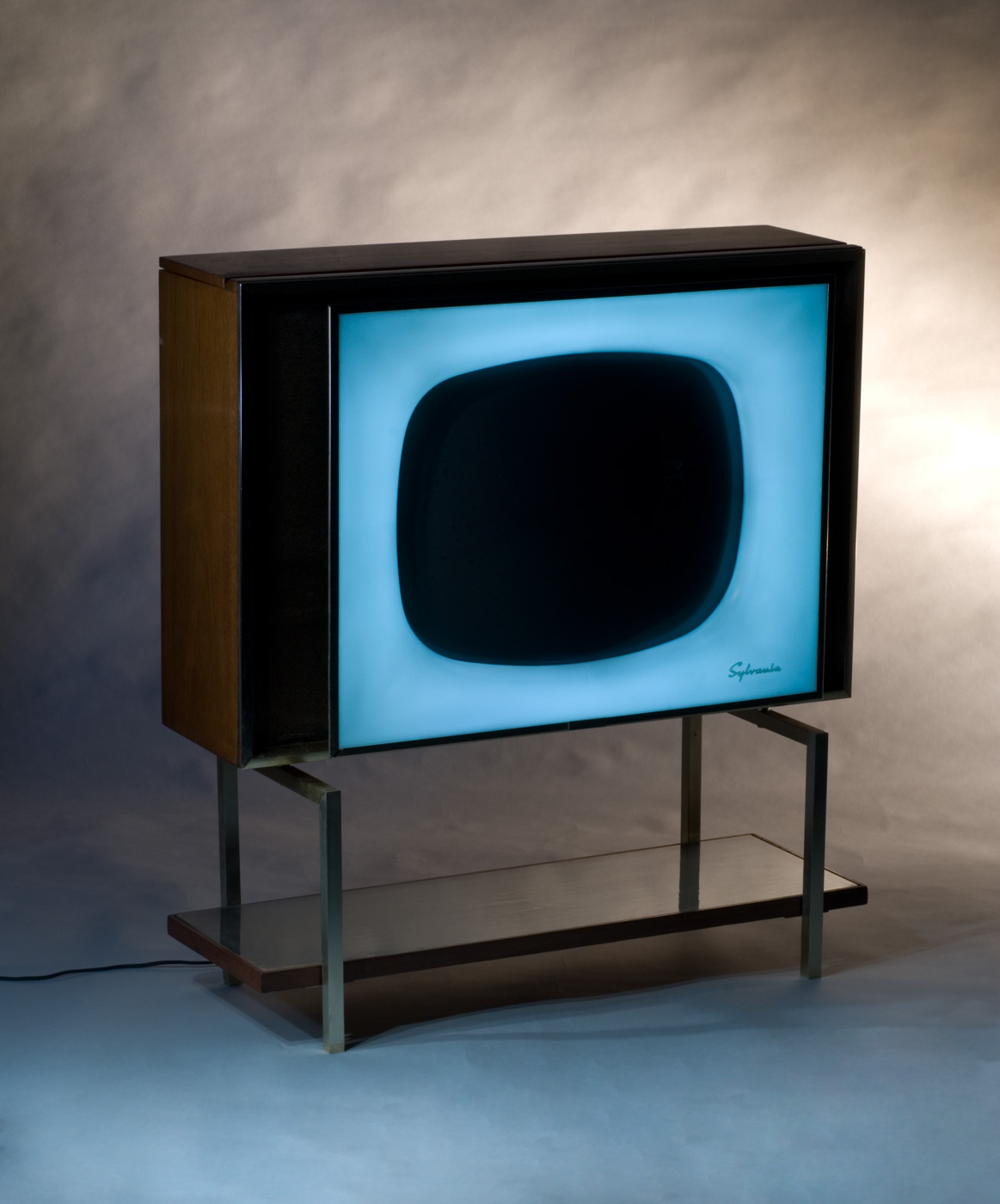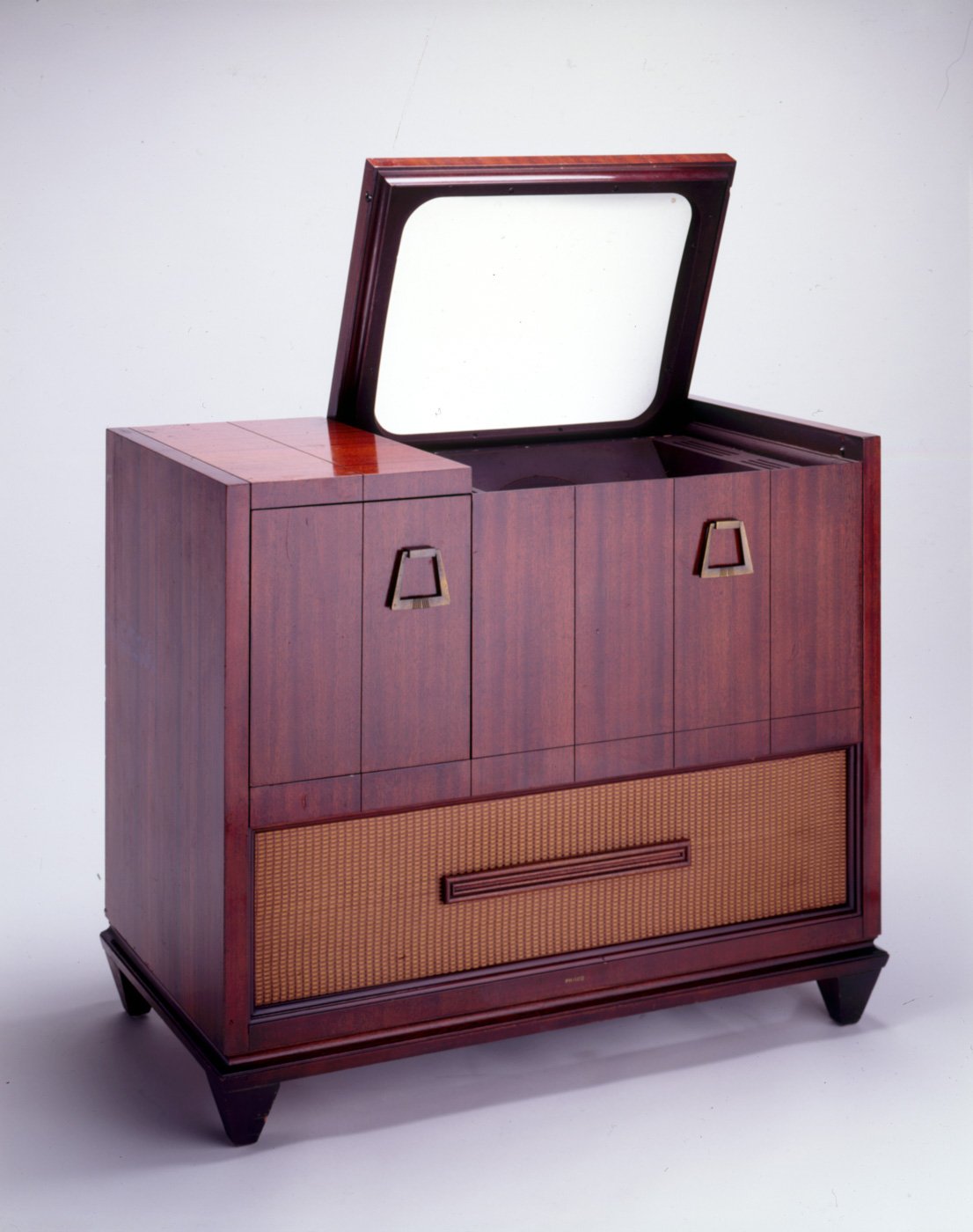Collection Spotlight
Television Receivers
The Museum’s collection includes a wide range of historically significant television receivers. Among the holdings are several early electromechanical units, such as the Model 100 Radiovisor, which were marketed to radio enthusiasts in the 1920s and early 1930s. Allelectronic televisions using cathode ray tubes became available in the late 1930s, making the transmission and reception of television signals more practical. However, the American entry into World War II in 1941 brought the nascent commercial television industry to a halt.
The Museum has several rare prewar sets, most of which featured very small screens. In the post-war years, television sets were mass-produced in increasing numbers; homes in the United States with a television set soared from 10,000 in 1946 to one million in 1948. Television sets from the 1940s and 1950s range from elaborate consoles combining a television receiver, phonograph and radio, to modest table-top models. The first mass-produced color television set, the RCA CT-100, became available in 1954. By the mid-1950s, the ubiquity of televisions in households made minor technical advances and design details important marketing points, illustrated by such sets as the Sylvania HaloLight. The first transistor unit, the Sony TV-8-301, was introduced in 1960, making mobile television viewing possible for the first time. More recent examples in the collection mark the shift from sets using a cathode ray tube (CRT) to decode broadcast signals, to slimmer units using liquid-crystal display (LCD) technology.


